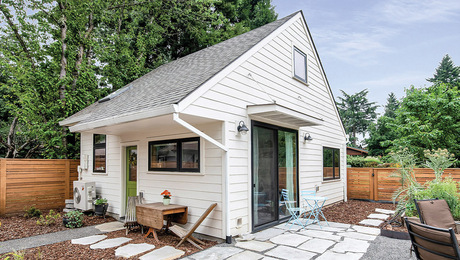Hi,
I’ve about twenty-five years experience building houses and remodeling foundation to finish. The last year I’ve been remodeling a Maybeck In the Berkeley Hills–a studio addition, dining room enlargement, two bathrooms, and now, finally the kitchen which features solid cherrywood doors on plywood boxes. I’m no cabinetmaker, though I’ve made quite a few. My question is this: several of the upper cabinets have wood-framed glass doors, and I’d like to glean all the tips I can get so I have a minimum of problems with this tricky part.
Here’s some of my concerns:
Can I use bisquits instead of dowells for the butt joints?
If I glue and clamp it up square and flat, what’s going to keep it that way once I hang the door?
The solid doors (simply edge-bisquited and glued) I made a little large and planed to fit–should I do the same with these or should I go for broke?
Answers to these or other unanticipated issues would be greatly appreciated…



















Replies
CMT and other router bit manufacturers make router bits to make glass doors.
Darkworksite4: When the job is to small for everyone else, Its just about right for me"
I think I would be hesitant to make glass doors using only biscuits and butt joints. I prefer mortise and tenons, however, dowels would probably be fine.
I made a mahogany full view storm door with a very large (heavy) piece of tempered glass in it and buried brass L-brackets into a mortise on all the inside corners to stiffen the frame. So far...2 1/2 years of everyday use...it is still true.
Something similar on a smaller scale might work for cabinet doors.
Thanks for the beta on the biscuits--a judgement call I don't have deep enough experience to make. The L-brackets seems like a prudent and pragmatic solution which ought to work, sounds like it did for you--thanks!
Mark Turpin
Berkely Hills, eh? High Budget Indeed!
For that type of construction, I would invest in a tennoning jig (Delta makes 2 nice ones) and a Mortiser. They will always stay straight.
I have made butt jointed cabinet doors with a cope and stick bit, there is just not a lot of glue surface. Bisquits will help, but I'd go for quality on this type of project. 3/4 stock will also be sorta flimsy. I'd use 5/4 stock, and when planed down will be about 13/16ths. You will be surprised at how sturdier the 1/16th makes it.
Boris
"Sir, I may be drunk, but you're crazy, and I'll be sober tomorrow" -- WC Fields, "Its a Gift" 1927
You might get some good information over at Knots. Those are the pro. cabinet gang.
There was a good article on the relative strength of biscuit, dowels, m and t, etc in Fine Woodworking in the last couple of years. Seem to remember the bicuits did okay.
I am presently making wood frame glass panel doors. I plan to use biscuits in the butt joints. I think that the silicone adhesive I use to bed the glass will contrubute to the overall strength of the door. They aren't that heavy,(alder and cherry).
I wouldn't use biscuits on anything bigger than a 3' by 2' door.
Good old half lap is quite strong, lotsa material left to work with, and lotsa glue surface...and all ya need is a table saw...or radial arm.......Jeff.......Sometimes on the toll road of life.....a handful of change is good.......
I use loose tenon construction for glass doors and then cut a cope and stick which allows for keeper strips for the glass (allowing the glass to be replaced). This is easy to do with a plunge router and dedicated fixture for the rails and stiles and gives a strong and tidy joint where the glue is a secondary source of strength. Once the fixture is made, the joints take minutes to cut. Ensure that the doors are glued up on a flat surface and the glass will help keep them flat. The glass also prevents racking if everything is fitted tightly. As mentioned by someone else, 13/16 or even 7/8 stock is a good idea for ridgidity.
Lots of ways to do it, but I would trust a biscuit joint, and definitely a double biscuit joint. I have very little faith in dowels for anything anymore.
as far as the glass goes, the old 'proper' way to do glass was to cut it a little smaller than the opening it was going to fit into, then shift it so it was racked in the opening...the four corners are digging in and keep the frame rigid, and you can't see it behind the stop or whatever you use to hold it in place. I never liked silicone at all for this.cabinetmaker/college instructor. Cape Breton, N.S